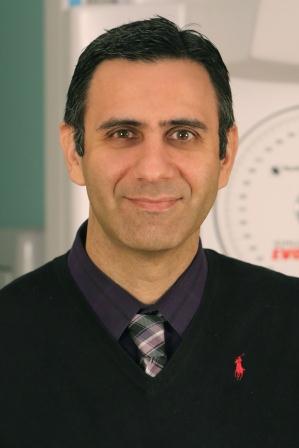Program Information
Reduction of Susceptibility Artifacts by Increasing the Bandwidth (BW) and Echo Train Length (ETL)
P Mavroidis1*, N Boci2 , S Kostopoulos3 , C Ninos4 , D Glotsos5 , G Oikonomou6 , A Bakas7 , V Roka8 , G Sakkas9 , A Tsagkalis10 , V Chatzivasileiou11 , G Batsikas12 , D Cavouras13 , N Papanikolaou14 , S Stathakis15 , E Lavdas16 , (1) University of North Carolina, Chapel Hill, NC, (2) Technological Education Institute of Athens, Athens, Attika, (3) Technological Education Institute of Athens, Athens, Attika, (4) Technological Education Institute of Athens, Athens, Attika, (5) Technological Education Institute of Athens, Athens, Attika, (6) Technological Education Institute of Athens, Athens, Attika, (7) Technological Education Institute of Athens, Athens, Attika, (8) Technological Education Institute of Athens, Athens, Attika, (9) Animus Kyanoys Larissas Hospital, Larissa, Thessaly, (10) Animus Kyanoys Larissas Hospital, Larissa, Thessaly, (11) IASO Thessalias Hospital, Larissa, Thessaly, (12) IASO Thessalias Hospital, Larissa, Thessaly, (13) Technological Education Institute of Athens, Athens, Attika, (14) University of Texas HSC SA, San Antonio, TX, (15) Cancer Therapy and Research Center, San Antonio, TX, (16) Technological Education Institute of Athens, Athens, Attika
Presentations
SU-E-I-62 (Sunday, July 12, 2015) 3:00 PM - 6:00 PM Room: Exhibit Hall
Purpose: The aim of this present study is to increase bandwidth (BW) and echo train length (ETL) in Proton Density Turbo Spin Echo (PD TSE) sequences with and without fat saturation (FS) as well as in Turbo Inversion Recovery Magnitude sequences (TIRM) in order to assess whether these sequences are capable of reducing susceptibility artifacts.
Methods: We compared 1) TIRM coronal (COR) with the same sequence with increased both BW and ETL 2) Conventional PD TSE sagittal (SAG) with FS with an increased BW 3) Conventional PD TSE SAG without FS with an increased BW 4) Conventional PD TSE SAG without FS with increased both BW and ETL. A quantitative analysis was performed to measure the extent of the susceptibility artifacts. Furthermore, a qualitative analysis was performed by two radiologists in order to evaluate the susceptibility artifacts, image distortion and fat suppression. The depiction of cartilage, menisci, muscles, tendons and bone marrow were also qualitatively analyzed.
Results: The quantitative analysis found that the modified TIRM sequence is significantly superior to the conventional one regarding the extent of the susceptibility artifacts. In the qualitative analysis, the modified TIRM sequence was superior to the corresponding conventional one in eight characteristics out of ten that were analyzed. The modified PD TSE with FS was superior to the corresponding conventional one regarding the susceptibility artifacts, image distortion and depiction of bone marrow and cartilage while achieving effective fat saturation. The modified PD TSE sequence without FS with a high (H) BW was found to be superior corresponding to the conventional one in the case of cartilage.
Conclusion: Consequently, TIRM sequence with an increased BW and ETL is proposed for producing images of high quality and modified PD TSE with H BW for smaller metals, especially when FS is used.
Contact Email:


